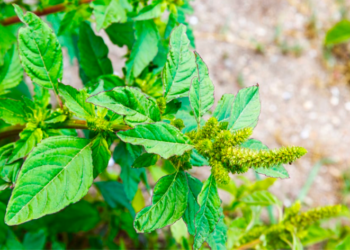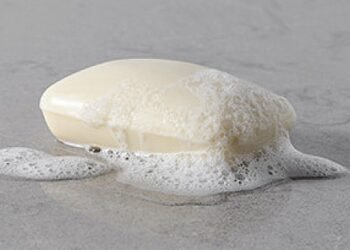Migraine is a neurological condition characterized by intense, debilitating headaches often accompanied by other symptoms. Unlike regular headaches, migraines typically present with a variety of additional symptoms that can significantly impact daily functioning. Understanding the causes and symptoms of migraines is crucial for identifying effective home remedies and managing this condition appropriately.
One primary distinction between migraines and regular headaches is the severity and duration of the pain. Migraines usually involve throbbing or pulsating pain, often localized to one side of the head. This pain can last anywhere from a few hours to several days, making it much more disruptive than a typical headache. In addition to the pain, migraines commonly bring about a range of symptoms, including nausea, vomiting, and increased sensitivity to light and sound. Some individuals may also experience an aura—visual disturbances such as flashing lights or blind spots—preceding the onset of the headache.
The exact cause of migraines remains a subject of ongoing research, but several factors are known to trigger these episodes. Stress is a significant contributor, as it can lead to muscle tension and changes in brain chemistry that precipitate a migraine. Dietary factors, such as the consumption of certain foods and beverages, can also trigger migraines. Common dietary triggers include caffeine, alcohol, and foods containing tyramine, such as aged cheeses and processed meats. Hormonal changes, particularly in women, can influence the frequency and severity of migraines, with many experiencing an increase in episodes around menstruation, pregnancy, or menopause.
Environmental factors, such as changes in weather, strong odours, and bright or flickering lights, can also act as triggers. Identifying these triggers can be a critical step in managing migraines effectively. By understanding the common causes and symptoms, individuals can better navigate their condition and seek appropriate remedies, whether through lifestyle adjustments or specific home treatments.
Dietary Adjustments to Alleviate Migraine Symptoms
Migraines can often be influenced by dietary factors, making it crucial to identify and avoid certain trigger foods. Common culprits include caffeine, alcohol, processed meats, and aged cheeses. Caffeine, while sometimes used to relieve headaches, can paradoxically trigger migraines in some individuals. Alcohol, particularly red wine, contains tyramine which can provoke migraine episodes. Processed meats such as sausages and hot dogs often contain nitrites and nitrates, which are known to contribute to migraines. Aged cheeses, like cheddar and blue cheese, also have high levels of tyramine, making them potential triggers.
To reduce the frequency and severity of migraines, consider substituting these triggers with healthier alternatives. For instance, instead of caffeinated beverages, opt for herbal teas or decaffeinated coffee. Replace alcohol with non-alcoholic options like mocktails or sparkling water infused with fresh fruits. Swap processed meats with lean proteins such as turkey or chicken breast, and choose fresh cheeses like mozzarella or ricotta over aged varieties.
Staying hydrated plays a significant role in migraine prevention. Dehydration can lead to headaches and exacerbate migraine symptoms. Aim to drink at least eight glasses of water daily, and consider incorporating hydrating foods like cucumbers, watermelon, and leafy greens into your diet.
In addition, incorporating anti-inflammatory foods can provide relief from migraines. Ginger and turmeric, known for their anti-inflammatory properties, can be integrated into meals or consumed as teas. Omega-3 fatty acids, found in fatty fish like salmon, flaxseeds, and chia seeds, are also beneficial in reducing inflammation and potentially alleviating migraine symptoms.
Maintaining a regular eating schedule is essential to prevent blood sugar fluctuations that could trigger migraines. Skipping meals or prolonged fasting can lead to drops in blood sugar, which may precipitate a migraine attack. Eating balanced meals at consistent times and including snacks if needed can help maintain stable blood sugar levels and reduce the risk of migraines.
Natural Remedies and Techniques for Migraine Relief
Migraines can be debilitating, but various home remedies and natural techniques can help alleviate the pain. One of the simplest and most effective methods is using a cold compress. Applying a cold pack to the forehead or neck can constrict blood vessels, reduce inflammation, and numb the area, providing significant relief. To use a cold compress, wrap ice packs or frozen vegetables in a cloth and apply it to the affected area for 15-20 minutes.
Essential oils such as peppermint and lavender are also popular for migraine relief. Peppermint oil contains menthol, which can relax muscles and ease pain. To use, dilute a few drops of peppermint oil with a carrier oil and massage it into your temples and the back of your neck. Lavender oil, known for its calming properties, can reduce migraine symptoms when inhaled. Add a few drops to a diffuser or a bowl of hot water and inhale the steam.
Acupressure, an ancient Chinese technique, involves applying pressure to specific points on the body to relieve pain. For migraine relief, the LI-4 point, located between the thumb and index finger, is often targeted. Apply firm pressure to this point for about 5 minutes on each hand. Similarly, massage therapy can reduce muscle tension and improve circulation, helping to alleviate migraine symptoms. Focus on massaging the neck, shoulders, and scalp gently.
Creating a calm environment and reducing sensory stimuli is crucial during a migraine attack. Dim the lights, minimize noise, and lie down in a quiet, dark room. This can help reduce the intensity of the migraine and promote quicker recovery. Additionally, regular exercise, yoga, and meditation can help prevent migraines by reducing stress and improving overall well-being. Incorporate these practices into your routine to maintain a balanced lifestyle and potentially reduce the frequency of migraine attacks.
Lifestyle Changes and Preventative Measures
Migraines, a debilitating condition affecting millions, can often be mitigated through strategic lifestyle changes and preventative measures. One of the foundational strategies is establishing and adhering to regular sleep patterns. Consistent sleep schedules help regulate the body’s internal clock, reducing the likelihood of migraine occurrences. Aim for 7-9 hours of sleep per night and maintain a fixed bedtime and wake-up time, even on weekends.
Stress management is another critical component in migraine prevention. Chronic stress is a well-known trigger, and integrating stress-reducing practices into daily routines can make a significant difference. Techniques such as mindfulness meditation, yoga, and deep-breathing exercises can help alleviate stress. Engaging in regular physical activity, like walking or swimming, also contributes to overall well-being and stress reduction.
Maintaining a healthy work-life balance is crucial. Overworking and neglecting personal time can exacerbate stress and fatigue, leading to migraines. Allocate time for hobbies, relaxation, and social activities to ensure a balanced lifestyle. Creating a migraine-friendly environment at home and work is equally important. Reduce exposure to bright lights and loud noises, as these can trigger migraines. Use soft lighting, noise-cancelling headphones, or earplugs to minimize these environmental factors.
Keeping a migraine diary can be an invaluable tool in identifying and avoiding personal triggers. Recording details such as diet, sleep patterns, stress levels, and environmental factors when migraines occur can help pinpoint specific triggers. This personalized approach allows for more effective prevention strategies tailored to individual needs.
Consulting with healthcare professionals for personalized advice is always recommended. They can offer insights into complementary therapies like acupuncture or biofeedback, which have shown promise in migraine prevention. These therapies work by targeting specific pressure points or teaching control over physiological functions, respectively, providing additional avenues for relief.












